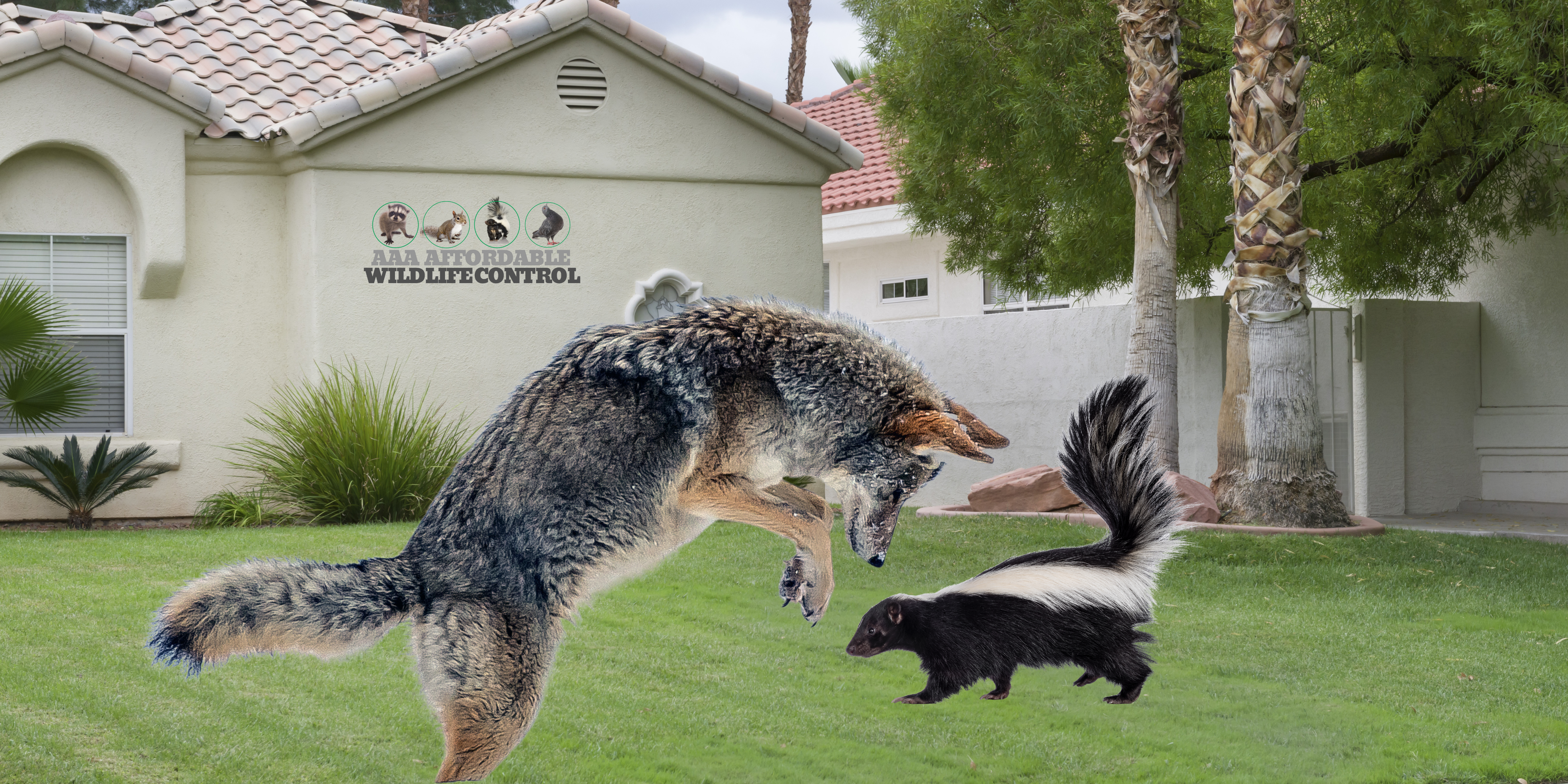
- Predation pressure is the impact of predators on prey populations, affecting their numbers and evolutionary traits.
- Urban environments may benefit from predation pressure through “predator proliferation”, where an abundance of predators helps control pest populations.
- Striped skunks may evolve to lose their stripes due to a decreased need for a warning sign in areas with less predation pressure.
- City squirrels benefit from lower predation pressure due to a lack of predators in urban settings, leading to higher abundance and less competition for food.
Are there more squirrels and raccoons this year? Customers often ask our wildlife removal technicians these questions, and the answer could be the result of predation pressure.
What Is Predation Pressure?
Predation pressure refers to the effects of predation on a natural community, particularly concerning species’ survival. It involves the influence of predators on their prey populations, affecting not only the current numbers of prey but also their survival rates and potential for reproduction.
Predation pressure can manifest in different forms, including the number of predation attempts by predators and the impact predators have on the evolutionary traits of prey species, such as the favouring of schooling behaviour in prey fish under high predation pressure. This evolutionary response can be due to factors like predator type or predator density in a given environment.
Urban ecosystems can benefit from predation pressure through a concept known as “predator proliferation,” where an abundance of predators in urban areas may help control the populations of prey species, such as rodents and small birds, that can become pests. This increased encounter rate with predators in urban settings can balance the local ecosystem, preventing any species from becoming too dominant.
Can Skunks Evolve To Lose Their Distinctive Stripes Due To Predation Pressure?
Striped skunks can potentially evolve to lose their distinctive stripes as evolutionary changes occur in response to various environmental and genetic factors.
A study referenced in National Geographic notes a link between fewer predators and the variation in skunk stripe patterns, suggesting that in areas with less predation pressure, the necessity for the warning sign provided by stripes may be reduced.
The evolution of the skunk’s white stripe initially could have been a beneficial trait for ancestors of the skunk, likely aiding in survival and thus getting passed down to subsequent generations.
Stripes may direct predators’ attention to a skunk’s defensive mechanisms, like their anal glands, serving as a warning.
However, if such a warning is no longer necessary, natural selection may favour skunks without stripes, leading to evolutionary change.
Do City Squirrels Benefit From Low Predation Pressure?
City squirrels benefit from lower predation pressure, a significant factor in urban environments where predators are typically fewer than in rural areas. The reduced number of predators in urban settings likely contributes to higher squirrel abundance, as research shows increased squirrel numbers correlating with human population density and feeding sites. Conversely, rural squirrels experience higher predation rates, fewer numbers, and more available food, implying that predation pressure significantly affects their population. Therefore, it’s plausible that city squirrels benefit from lower predation pressure.


